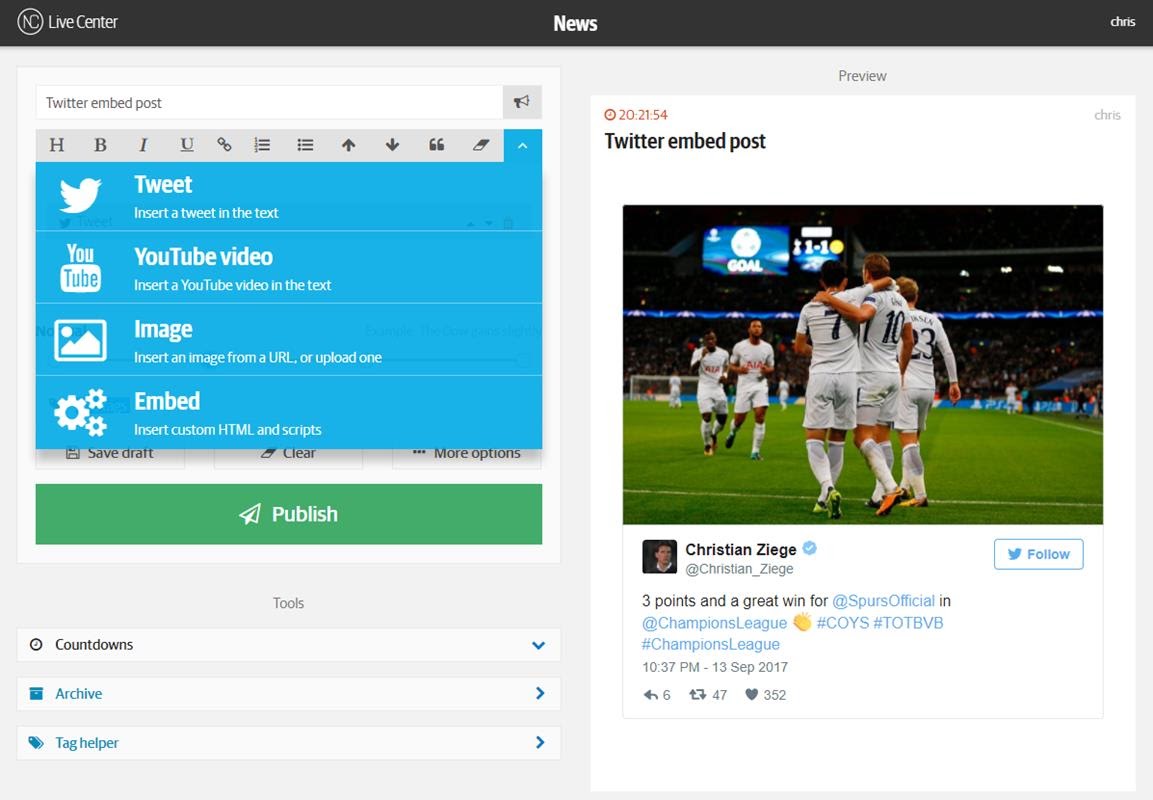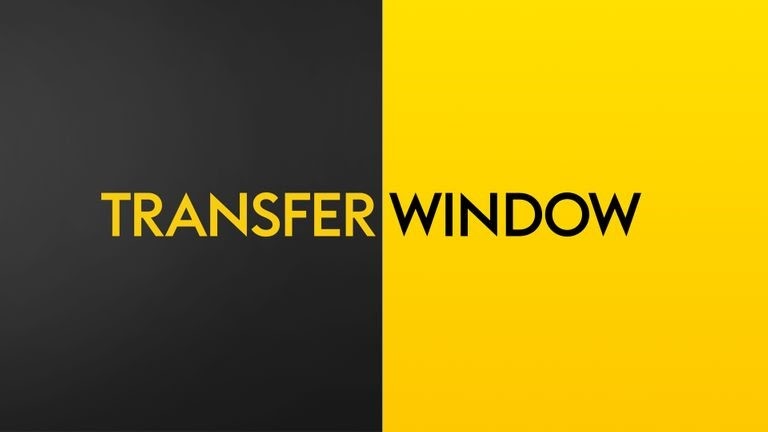Show readers what is most important in live coverage
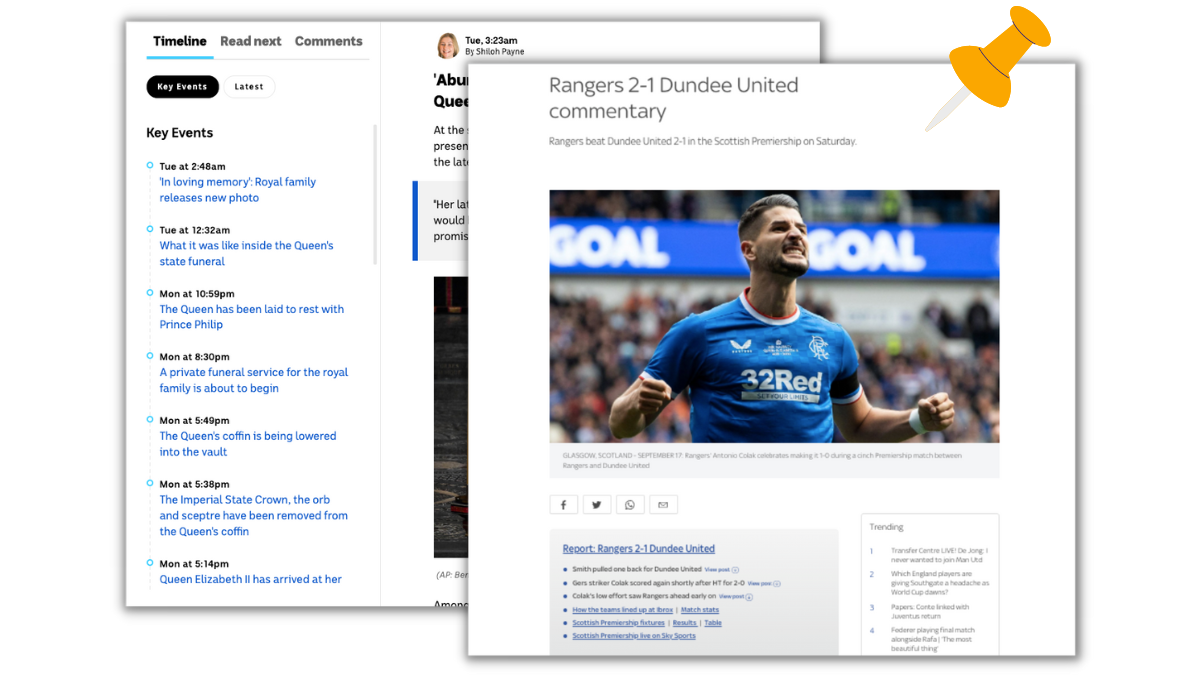
Show readers what is most important in live coverage
Why you should highlight important posts in a live blog
Live blogs are a great way to communicate with readers in an ongoing stream of updates. Be it a football game, an ongoing election, or stock market news, live blogs help journalists tell stories with concise updates, ensuring readers always find the latest news on their chosen digital newspaper.
However, with frequent updates, many posts get lost as new posts are added to the top. Many important posts get rapidly pushed down because blogs are displayed sequentially. Yet, their relevance and importance dictates that they should appear with greater prominence.
For readers who land on a live blog page, this translates into scrolling through many news items in a feed to find the most relevant posts. This, of course, isn’t ideal. Readers might not be willing to scroll through a lot of existing content to find the information they are looking for.
Grabbing readers attention & piquing their interest
Newspapers only have a short time period to grab the attention of web visitors and help readers find what they are looking for before they decide to leave. News platforms need to tell them why they should stay.
How to create a live blog coverage that:
- Updates frequently?
- Contains posts with a lot of content, including tweets, images or videos?
- Highlights the most important posts?
- Helps users easily find the posts they were looking for?
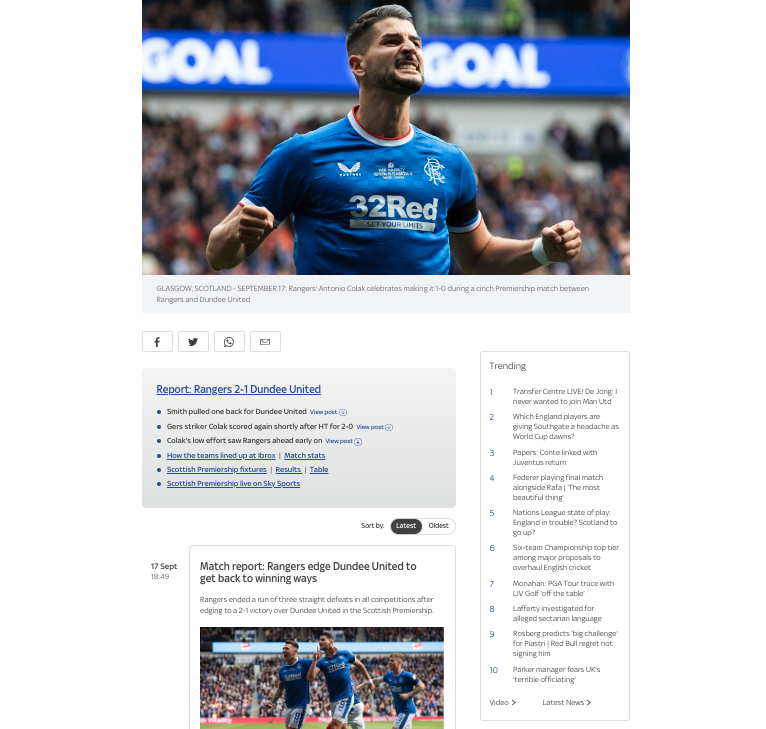
Live coverage of a hockey game is wildly different from a traffic live blog. As an example, when covering a hockey game, live blog posts have to be in chronological order with the most recent posts on top.
If a festival or a parade is being covered instead, pinning posts to the top can be a great way to grab the attention of new visitors. Using the highlighted posts panel, where the most important posts can easily be seen and navigated to, users are able to easily find the key milestones of an event.
Features to highlight important posts in a live blog
1. Pinned posts
This is a popular feature for live bloggers. Pinning a post puts it at the top of the feed even when newer posts are being published. Since the top of the feed is what readers will see first, it makes sense to pin the most important posts there.


One downside of pinning posts is that they can potentially take up a lot of space at the top of your feed, especially on mobile devices. A pinned post requires the user to scroll far down in order to see the regular, chronological posts. Another drawback is that this requires manual work. An editor needs to remember to pin and unpin posts. This can interrupt workflows, and there is a chance that a pinned post is kept at the top of the live blog for too long.
2. Highlighting breaking news
Highlighting posts with a colored flag is a simple yet effective way to communicate to readers that a post is important. Especially if an important event just happened, quickly applying breaking news flag and publishing a post can be very impactful and give a live blog a sense of urgency.
It is worth noting that a “breaking news highlight” does not change the order of the post, as opposed to what pinned posts do.
Once a post is flagged and new posts are published thereafter, the flagged post will be pushed down the feed. This can of course be desirable in a football live blog where it can be helpful for readers to easily see where a corner, goal, or offside happened. It’s important to reserve the highlight feature for just the most important posts, since it may quickly become difficult for readers to navigate through the stream of posts if many are highlighted.
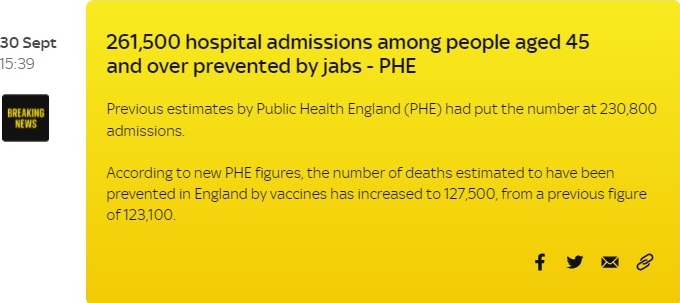
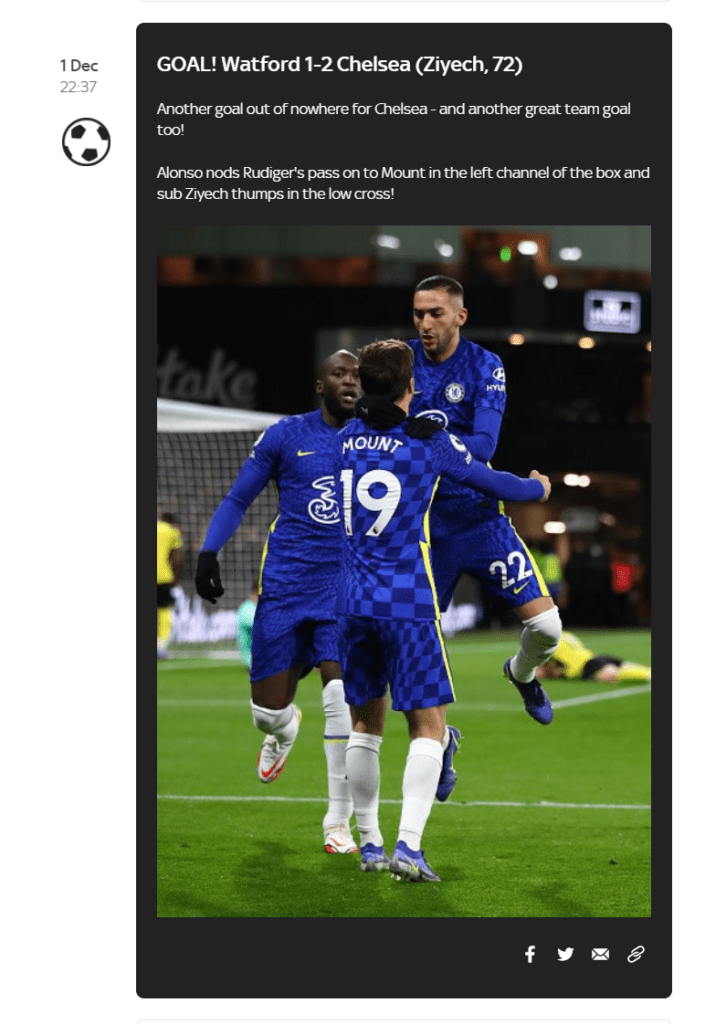
3. Tags
When properly used in live blogs and coupled with a capable live blogging tool, tags can give users a lot of control and help them find the type of content they are looking for. This is an extremely intuitive way for readers to consume live blog content as they are able to click any tag that is available and thereby effectively create their own feed of content.
4. Importance levels
Let’s look at an example where the editor doesn’t want to tag a post with categories, but instead rank its importance. Just like tags, Importance levels are set on posts to signify how important or common a post is.
Below is an example where a visual styling has been applied to a post when it has been marked as important:
This is similar to Breaking News highlights, but this visual styling can be used to a larger extent and also in combination with the Breaking news highlight.
5. Highlight panel
A highlight panel can be a separate element to the side, or sit on top of a live blog and contain the header text of key posts in the feed below. This panel helps summarize key events of a live blog and will redirect readers to the specific sections.
When covering an election, press conference, or other type event that, by nature, requires a constant flow of updates, a highlights panel is a great tool to help readers quickly get up-to-speed on key events.
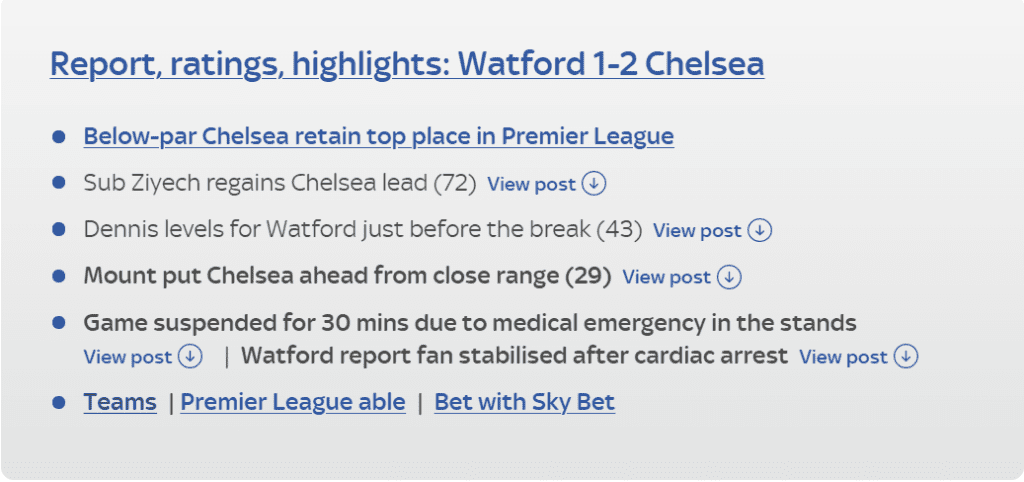
6. Trending posts
Live blogging is so much more than just a one-way feed of updates created by content creators. By allowing users to submit questions and comments, they can facilitate dialogue and cover topics and ideas readers care about about. It is possible to harness this engagement and show which posts in your live blog coverage are “trending”, or receiving the most comments from readers.
Trending posts can be marked in different ways, for example through adding icons in the top-right corner of the post.
This feature is most effective in Q&A live blogs.
7. News Overview
Finally, news overview builds on both “tags” and “importance levels” but uses them in an entirely different way.
Taking the example of a live blog topic that has been covered during many months, such as the financial market. Every day, content writers have tagged posts with the topic that it relates to, such as the S&P 500, or oil price, as well the importance level of each post.
As the number of posts starts to accumulate and date back in time, some posts might still be relevant or interesting to someone who cares about the topic, yet following the thread will become increasingly difficult as it would require a lot of scrolling down the feed.
Here’s where the news overview comes into play. This feature allows users to select a time frame and see how many posts had been written on a given topic as well as how many post had been marked as important.
The news overview filters the posts below to enable readers to see tagged posts with that topic:
Showing readers what’s important: Finding the right balance
Showing an audience the key events in a live blog is all about balance. If every post is highlighted and pinned, a feed will quickly become convoluted. The key to successfully engaging visitors and loyal readers alike is striking the right balance. Users should be encouraged to scroll and explore a live coverage, and at the same time pique their interest enough with highlighted content to convince them to stay.
In general, readers who land on a live blog will quickly find something important or interesting that catches their attention. This is the stage at which a live blogging solution may become a key element in a newspaper’s traffic generation strategy.
Interested in trying out the covered features for yourself?

